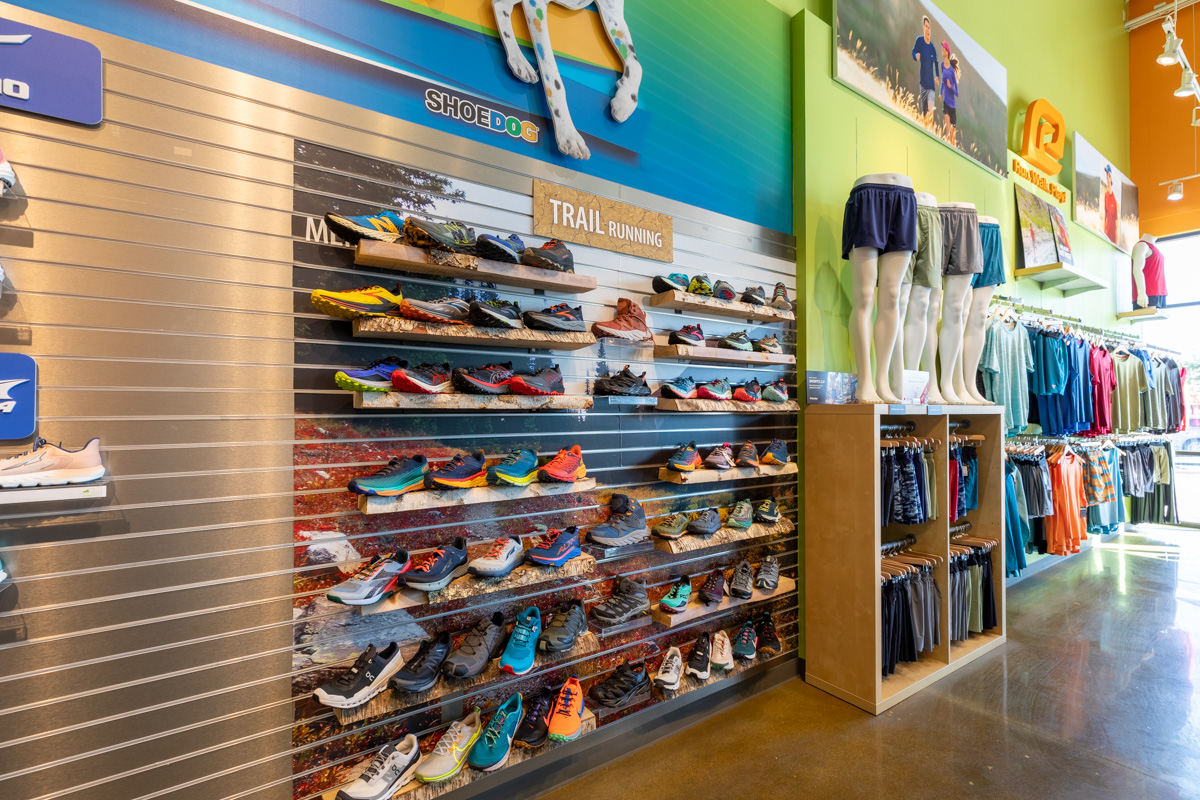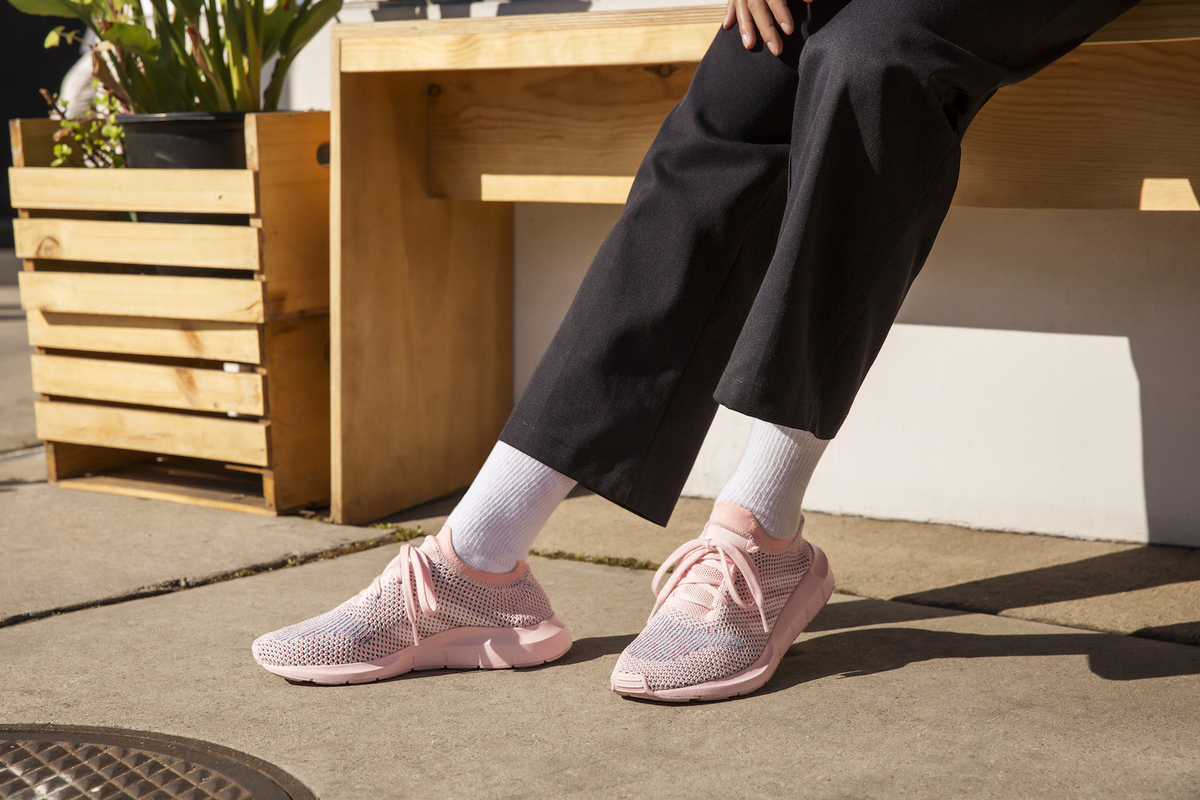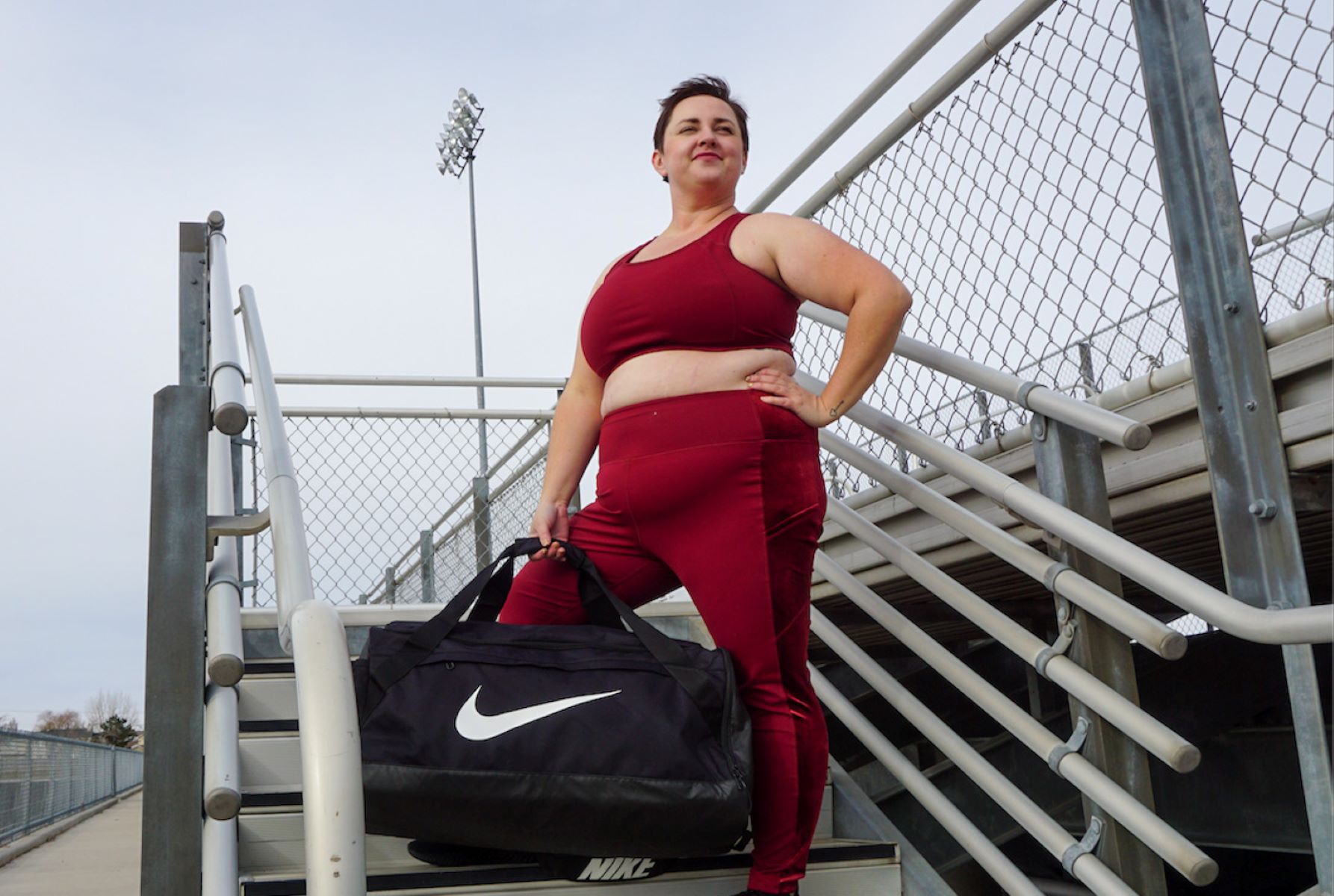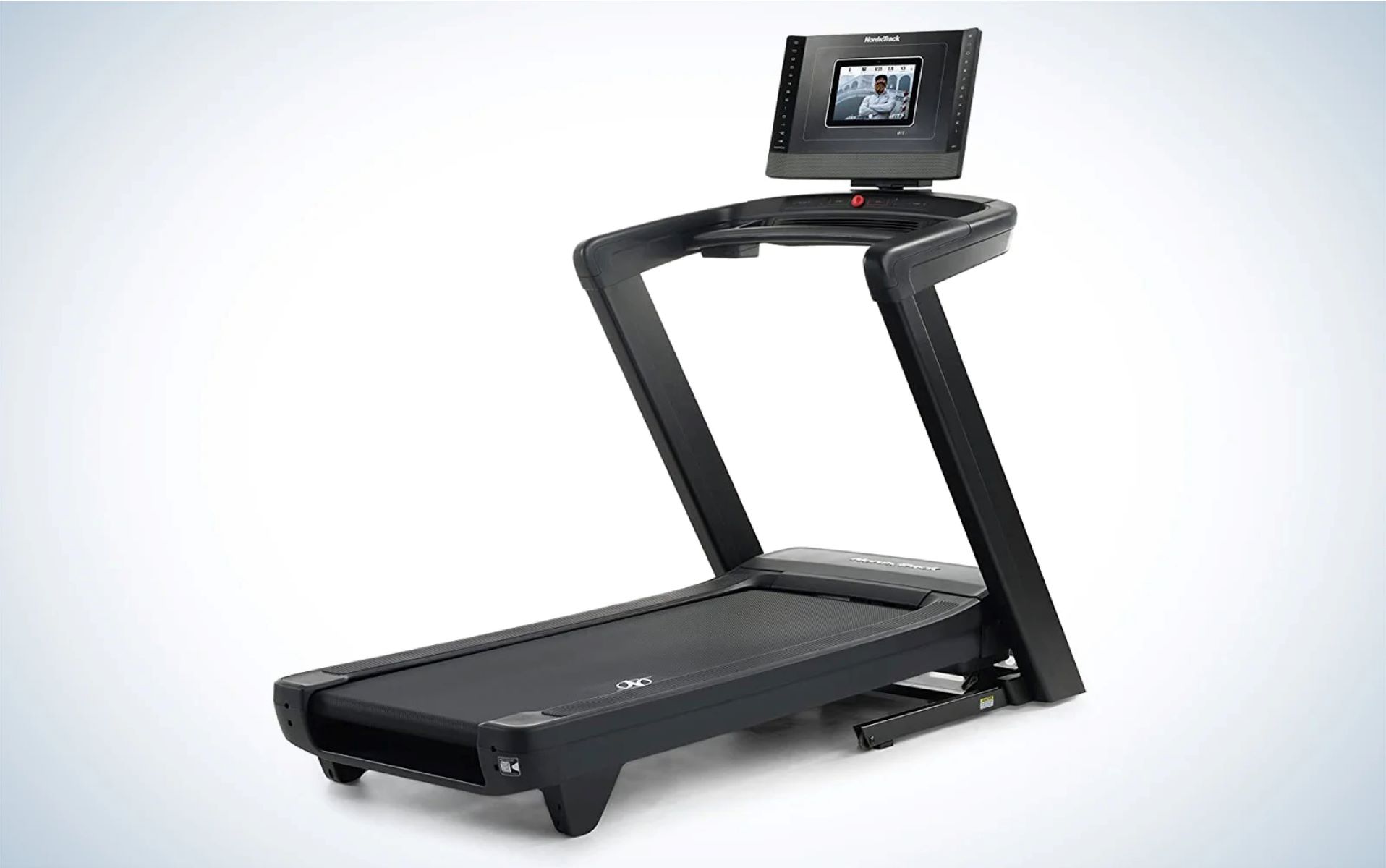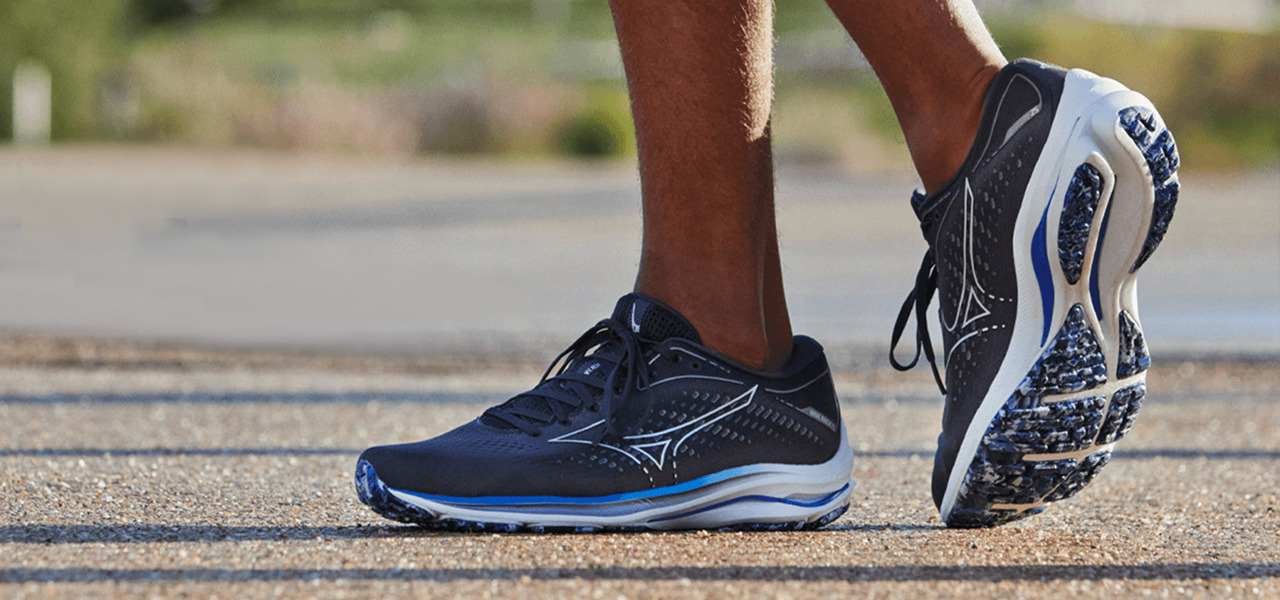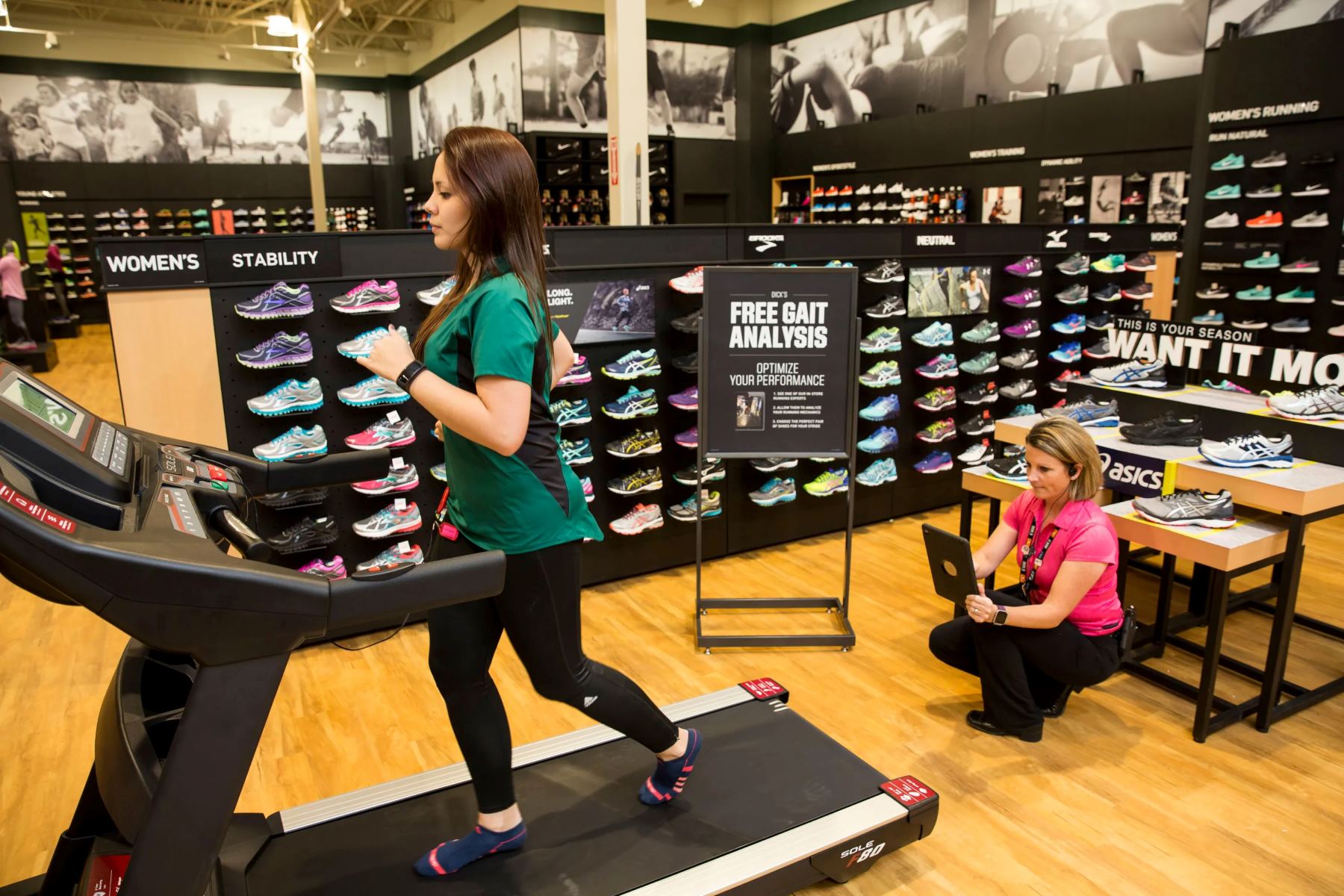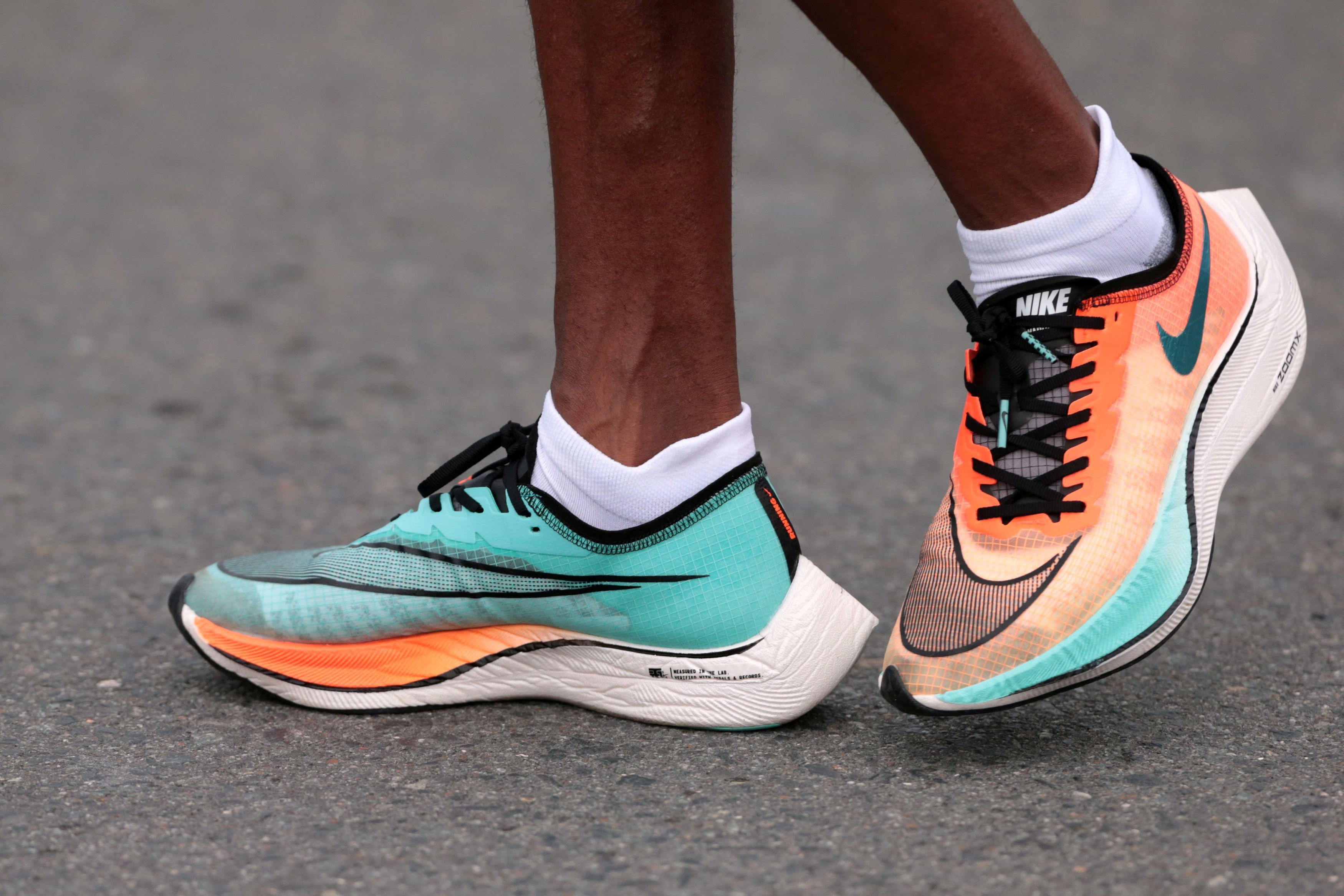Home>Misc>Featured>How Department Store Stores Activewear Inventory
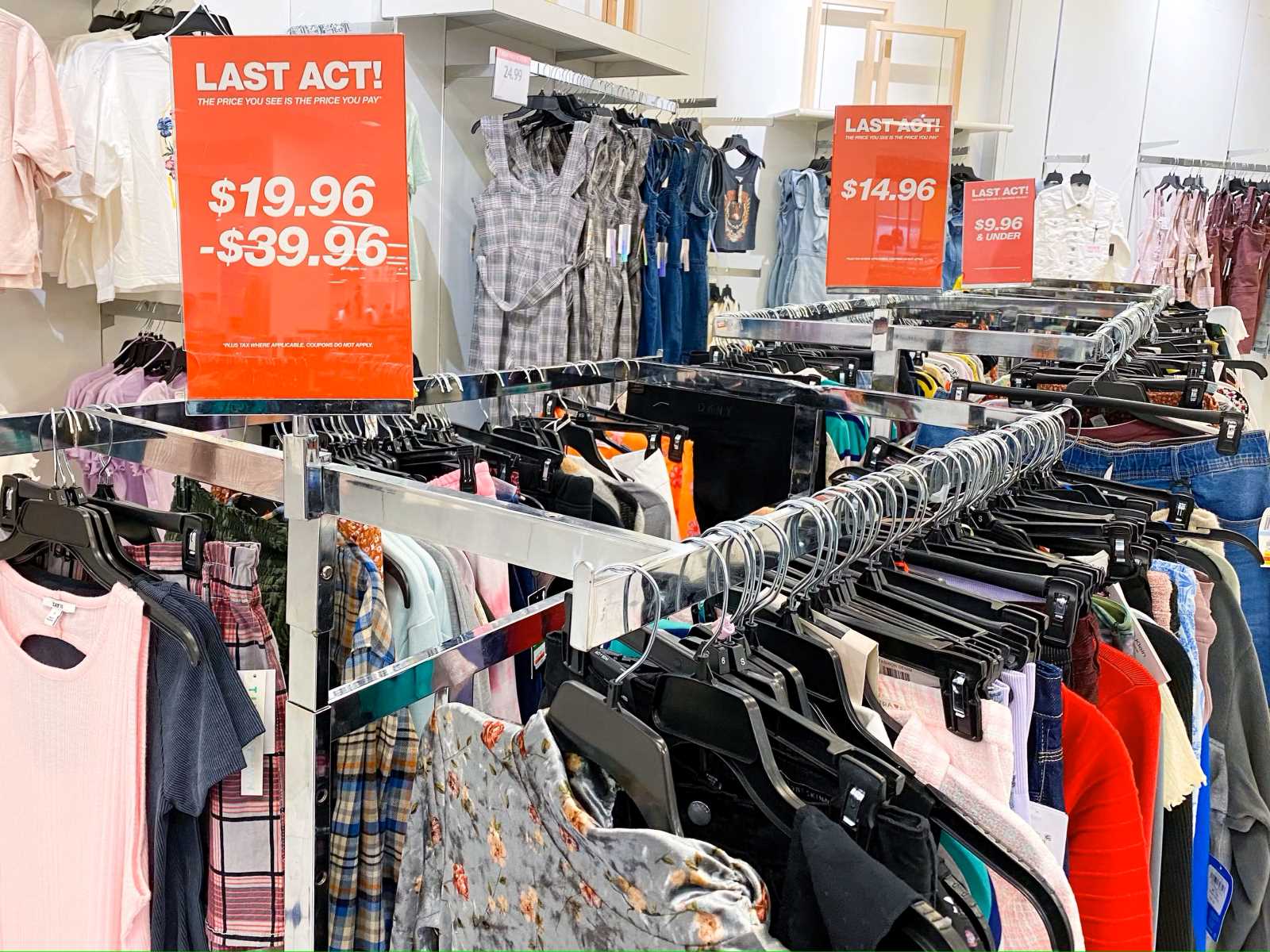

Featured
How Department Store Stores Activewear Inventory
Published: October 12, 2023
Looking for high-quality activewear? Check out our featured selection of activewear available at department stores. Find the latest styles and brands to enhance your workout wardrobe.
Introduction
Welcome to the world of department stores and their inventory management, specifically focusing on activewear. Department stores play a crucial role in the retail industry, offering customers a wide range of products under one roof. Activewear, which includes sports clothing, footwear, and accessories, has gained immense popularity in recent years due to the increasing emphasis on fitness and a healthy lifestyle.
Department stores understand the importance of catering to the growing demand for activewear, and as a result, managing activewear inventory efficiently has become imperative. This article will delve into the intricacies of managing activewear inventory in department stores, covering various factors, strategies, and challenges involved.
Managing activewear inventory effectively is crucial for department stores for several reasons. Firstly, activewear is a highly competitive market, with a plethora of brands and products available. Department stores need to ensure that they have a diverse and attractive selection of activewear to meet the demands of their customer base.
Secondly, activewear is a seasonal and trendy product category. Styles and preferences change rapidly, and department stores need to keep up with the latest trends to remain competitive. This necessitates careful inventory management, including timely restocking and accurate forecasting.
Thirdly, activewear is often associated with various sports and fitness activities. Department stores need to consider the specific requirements of different sports and ensure they have the appropriate inventory to cater to enthusiasts of each sport.
Lastly, department stores need to strike a balance between maintaining a sufficient inventory of activewear and minimizing excess stock. Overstocking can lead to increased costs, markdowns, and ultimately, reduced profitability.
In the following sections, we will explore the various factors involved in managing activewear inventory, including procurement strategies, organizing and displaying inventory, inventory management systems, sales and promotional techniques, and the challenges faced by department stores in this process.
Importance of Activewear Inventory in Department Stores
Activewear has become a significant category within the fashion industry, and its demand continues to grow exponentially. In today’s health-conscious society, more and more people are embracing an active lifestyle, which has led to a surge in the popularity of activewear. This trend has not gone unnoticed by department stores, as they recognize the importance of offering a diverse range of activewear options to satisfy their customers’ needs.
One of the key reasons why activewear inventory is crucial for department stores is the immense market potential it holds. The activewear industry has experienced remarkable growth in recent years, driven by factors such as increased awareness of the importance of fitness, participation in sports, and a desire to lead a healthy lifestyle. This presents a significant opportunity for department stores to tap into a lucrative market and capture a larger share of consumer spending.
Furthermore, activewear is not just limited to gym-goers and athletes; it has become a fashion statement in its own right. People are wearing activewear not only during workout sessions but also as part of their everyday casual attire. This shift in consumer behavior has created a demand for activewear that is both stylish and functional. Department stores have recognized this trend and have started curating their activewear inventory accordingly, offering a wide range of fashionable activewear options that cater to different tastes and preferences.
Another reason why activewear inventory is important for department stores is the customer loyalty it can foster. By offering a comprehensive selection of activewear, department stores can become a one-stop-shop for customers in search of quality sports clothing, footwear, and accessories. This helps to build customer trust and loyalty, as shoppers are more likely to return to a store where they can find all their activewear needs conveniently in one place.
In addition to driving sales, activewear inventory also has the potential to attract new customers to department stores. Those who are passionate about fitness and sports often seek out retail locations where they can find the latest activewear trends and innovations. By providing a well-stocked activewear section, department stores can position themselves as go-to destinations for the fitness-focused consumer, drawing in a new demographic that may not have previously frequented their store.
Overall, the importance of activewear inventory in department stores cannot be overstated. From capitalizing on market growth to fostering customer loyalty and attracting new shoppers, a well-managed and diverse activewear inventory can significantly contribute to the success and profitability of a department store.
Factors to Consider When Managing Activewear Inventory
Managing activewear inventory in department stores requires careful consideration of various factors. By understanding and addressing these factors, department stores can optimize their inventory management processes and ensure they have the right products available at the right time. Here are some key factors to consider:
- Seasonality: Activewear, like any other fashion category, is influenced by seasonal trends. It’s important to analyze and forecast the demand for different types of activewear throughout the year. For example, during the warmer months, there may be higher demand for lightweight and breathable activewear suitable for outdoor activities, while during the colder months, customers may look for warmer and more insulated options.
- Trending Styles and Designs: Activewear is a highly fashion-driven category. Staying on top of the latest styles and designs is crucial to meet customer expectations and attract repeat purchases. Department stores should closely monitor fashion trends, collaborate with popular brands, and conduct market research to curate their inventory with the most sought-after styles, colors, and designs.
- Brand Diversity: Activewear customers often have brand preferences, whether based on quality, performance, or personal style. Department stores should stock a variety of activewear brands to cater to different customer needs and preferences. This includes established brands known for their performance and reliability, as well as up-and-coming brands that offer unique styles and innovation.
- Size and Fit: Activewear, like any other clothing category, must be available in a range of sizes to accommodate diverse body types. Ensuring an adequate inventory of different sizes is crucial to maximize sales and customer satisfaction. Additionally, providing accurate size charts and fit information can help customers make informed purchasing decisions, reducing the likelihood of returns or exchanges.
- Quality and Durability: Activewear is designed to withstand rigorous physical activities, making quality and durability essential considerations. Department stores should carefully evaluate the quality of the materials used, the construction of the garments, and the overall durability of the products before adding them to their inventory. This ensures that customers receive products that meet their expectations and deliver long-term value.
- Demand Forecasting: Accurate demand forecasting is crucial to prevent stockouts or excess inventory. By analyzing historical data, considering market trends, and leveraging advanced inventory management systems, department stores can make more informed decisions regarding order quantities and replenishment schedules. This helps to optimize inventory levels and minimize the risk of lost sales or excessive holding costs.
- Supplier Relationships: Building strong relationships with reliable suppliers is vital for managing activewear inventory. Department stores should work closely with suppliers to ensure consistent quality, timely deliveries, and favorable pricing terms. Regular communication and collaboration can help address any supply chain issues and maintain a steady flow of inventory.
By taking these factors into account, department stores can effectively manage their activewear inventory, meeting customer demands, staying ahead of the competition, and ultimately driving sales and profitability.
Procurement Strategies for Activewear Inventory
Procurement plays a vital role in managing activewear inventory in department stores. Implementing effective procurement strategies ensures that department stores can source the right activewear products from reliable suppliers while optimizing costs and maintaining quality. Here are some key procurement strategies to consider:
- Supplier Evaluation and Selection: The first step in the procurement process is identifying and evaluating potential suppliers. Department stores should consider factors such as supplier reputation, reliability, product quality, pricing, and delivery capabilities. By assessing multiple suppliers and selecting those that meet the required criteria, department stores can build a robust supplier base for their activewear inventory.
- Negotiation and Contract Management: Negotiating favorable terms and conditions with suppliers is crucial for maximizing value and maintaining cost control. This includes negotiating pricing, payment terms, order quantities, and delivery schedules. Department stores should also establish clear contracts with suppliers that outline expectations, quality standards, and performance metrics.
- Collaborative Planning: Effective collaboration with suppliers is essential for aligning procurement with sales and demand forecasts. Department stores should share sales data and insights with their suppliers to facilitate accurate demand planning. By collaborating closely, both parties can adjust production and inventory levels to meet the expected demand, reducing the likelihood of stockouts or excess inventory.
- Just-In-Time (JIT) Inventory: JIT inventory management allows department stores to minimize holding costs and optimize inventory levels. By closely aligning inventory deliveries with customer demand, department stores can reduce the risk of overstocking or stockouts. JIT can also help improve cash flow and operational efficiency, as it reduces the need for large storage spaces and excess inventory handling.
- Multiple Sourcing: Relying on a single supplier for activewear inventory can present risks, such as supply disruptions or dependency. Department stores should consider implementing a multiple sourcing strategy, working with multiple suppliers to diversify their sourcing channels. Having alternative suppliers ensures a backup in case of any unforeseen circumstances and promotes healthy competition among suppliers, leading to better pricing and service quality.
- Collaborating with Exclusive Brands: Engaging in partnerships with exclusive activewear brands can be a strategic move for department stores. By collaborating with exclusive brands, department stores can differentiate themselves from competitors and attract customers seeking unique and limited-edition activewear. These partnerships can also provide department stores with access to specialized products and desirable co-branded collections.
- Supplier Performance Evaluation: Ongoing evaluation of supplier performance is crucial to ensure consistent quality and compliance with agreed-upon standards. Department stores should establish key performance indicators (KPIs) and regularly assess suppliers’ performance in areas such as product quality, on-time delivery, responsiveness, and communication. This evaluation process helps identify any issues or areas for improvement and guides future procurement decisions.
By implementing these procurement strategies, department stores can efficiently manage their activewear inventory, ensuring a reliable supply of high-quality products while optimizing costs and maintaining strong supplier relationships.
Organizing and Displaying Activewear Inventory in Department Stores
The organization and display of activewear inventory in department stores play a crucial role in attracting customers, promoting sales, and ensuring a seamless shopping experience. Here are some key factors to consider when organizing and displaying activewear inventory:
- Categorization and Segmentation: Department stores should categorize and segment their activewear inventory based on various factors such as gender, sport/activity type, and product type. This allows customers to easily find the specific activewear they are looking for and simplifies the browsing process. Clear signage and labels can guide customers to the relevant sections.
- Visual Merchandising: Creating visually appealing displays can capture customers’ attention and entice them to explore the activewear section. Utilize attractive and eye-catching mannequins, props, and themed displays to showcase different sportswear outfits and demonstrate how the activewear can be styled for different activities. This helps customers envision themselves wearing the products and encourages impulse purchases.
- Seasonal Displays: Rotating displays and updating them to reflect seasonal trends can keep the activewear section fresh and exciting. Highlighting products suitable for the current season or upcoming sporting events can spur customer interest and drive sales. Incorporate relevant visuals and signage to create a sense of urgency and encourage customers to make timely purchases.
- Sizing and Fitting Areas: Providing dedicated areas for customers to try on activewear and check the fit is essential for customer satisfaction. Well-lit and spacious fitting rooms with mirrors and seating can enhance the shopping experience. Additionally, consider placing size charts, fitting guides, and measurement tools nearby to assist customers in finding the right size.
- Product Information: Clear and accurate product information is essential to help customers make informed purchase decisions. Display key details such as fabric composition, features, care instructions, and sizing information prominently. Including QR codes or digital touchscreens can provide additional product information, customer reviews, and recommendations.
- Product Accessibility: Ensure that the activewear inventory is easily accessible to customers. Avoid overcrowding and maintain organized shelves and racks. Arrange products by size within each category, with clear signage to guide customers. Regularly restock and refresh the inventory to maintain a visually appealing display and avoid empty spaces.
- Prominent Brand Display: Highlighting popular activewear brands and collaborations can attract brand-conscious customers. Create dedicated sections or displays to showcase brands with a strong reputation and customer demand. Collaborate with brands for exclusive launches or limited-edition collections, providing a unique shopping experience and fostering brand loyalty.
- Sales and Promotions: Utilize promotional strategies within the activewear section to drive sales. Offer discounts, bundle deals, or loyalty rewards to incentivize purchases. Place signage or banners indicating ongoing promotions and highlight the value customers can gain from buying activewear from the department store.
- Accessible Customer Assistance: Ensure that knowledgeable staff members are readily available to assist customers in the activewear section. They can provide guidance on product selection, offer styling suggestions, and answer any questions customers may have. Well-trained staff can enhance the overall shopping experience and build trust with customers.
By organizing and displaying activewear inventory in a visually appealing and customer-oriented manner, department stores can create an inviting atmosphere that encourages customers to explore, try on, and ultimately make purchases from their activewear collection.
Inventory Management Systems for Activewear in Department Stores
Inventory management is a critical aspect of operating a successful department store, especially when it comes to managing activewear inventory. Implementing effective inventory management systems can help department stores streamline their operations, optimize stock levels, and ensure a seamless customer experience. Here are some key considerations for inventory management systems:
- Real-Time Inventory Tracking: An inventory management system should provide real-time visibility into the stock levels of activewear items. This allows department stores to accurately monitor inventory levels, track sales, and make informed decisions regarding restocking or replenishment. By having up-to-date information, stores can avoid stockouts and ensure that popular items are readily available.
- Forecasting and Demand Planning: A robust inventory management system should include forecasting and demand planning capabilities. By analyzing historical sales data, market trends, and customer preferences, the system can generate accurate demand forecasts. This helps department stores make informed decisions regarding inventory levels, reorder points, and procurement schedules, minimizing the risk of overstocking or stockouts.
- Automated Replenishment: Automating the replenishment process through the inventory management system can save time and improve efficiency. The system can generate purchase orders or reorder alerts based on predetermined stock thresholds, ensuring that inventory is replenished in a timely manner. This eliminates the need for manual monitoring and reduces the risk of human errors.
- Barcode or RFID Integration: Implementing barcode or RFID (Radio Frequency Identification) technology within the inventory management system allows for accurate and efficient tracking of activewear items. Each product can be assigned a unique identifier, enabling easy scanning and identification. This streamlines inventory management processes, from receiving new stock to conducting regular inventory audits.
- Inventory Analytics: An effective inventory management system should provide robust analytics and reporting capabilities. This includes detailed insights into sales trends, stock turnover rates, and slow-moving items. By analyzing this data, department stores can identify underperforming products, optimize pricing strategies, and make informed decisions regarding inventory levels and product assortment.
- Integrations with POS Systems: Integrating the inventory management system with the point-of-sale (POS) system allows for seamless synchronization of sales and inventory data. This ensures accurate stock updates as items are sold and minimizes discrepancies between sales records and actual inventory. This integration also enables real-time visibility into product availability, preventing overbooking or overselling of activewear items.
- Multi-Channel Inventory Management: Department stores often have both online and physical retail channels. A robust inventory management system should be capable of managing inventory across multiple channels, ensuring accurate stock levels are maintained across all sales platforms. This prevents overselling or underselling of activewear items and provides a consistent customer experience.
- Return and Exchange Management: An inventory management system should include features to handle returns and exchanges efficiently. This includes the ability to track returned items, update inventory levels, and process refunds or exchanges seamlessly. This ensures that returned activewear items are properly accounted for in inventory and available for resale.
By implementing an effective inventory management system tailored for activewear inventory, department stores can streamline their operations, reduce costs, and optimize customer satisfaction. Such systems enable accurate inventory tracking, efficient replenishment, informed decision-making, and overall inventory control.
Sales and Promotion Techniques for Activewear Inventory
Effectively promoting and selling activewear inventory is crucial for department stores to drive sales and maximize the success of their activewear department. By employing various sales and promotion techniques, stores can attract customers, increase brand awareness, and boost revenue. Here are some strategies to consider:
- Seasonal Sales: Offer seasonal sales and promotions for activewear that align with customers’ needs. For example, discounts on winter activewear gear during the colder months or summer sales for outdoor attire. Creating a sense of urgency by highlighting limited-time offers can encourage customers to make purchases.
- Bundles and Package Deals: Create bundled offers that combine multiple activewear items, such as leggings, a sports bra, and a workout top for a discounted price. Package deals can entice customers to purchase more than one item and provide added value, increasing overall sales and boosting customer satisfaction.
- Loyalty Programs: Implement a loyalty program specifically for activewear purchases. Offer benefits such as exclusive discounts, early access to new releases, or points accumulation for future discounts. This encourages repeat purchases and builds customer loyalty, leading to long-term profitability.
- Collaborations and Exclusive Collections: Partner with popular activewear brands or influencers to create exclusive collections or limited-edition releases. These collaborations can generate buzz, attract new customers, and create a sense of exclusivity and desirability around your activewear inventory.
- Influencer Marketing: Collaborate with fitness influencers or athletes who align with your target customer base. They can promote your activewear inventory through social media platforms, blogs, or sponsored events. Influencer endorsements can significantly increase brand visibility and credibility, driving more sales and attracting new customers.
- Visual Merchandising: Create visually appealing displays within the department store to showcase your activewear inventory. Utilize mannequins dressed in the latest activewear outfits, attractive signage, and props that reflect the lifestyle and activities associated with the clothing. This creates an aspirational experience for customers, increasing their desire to purchase the showcased items.
- Online Presence and E-commerce: Establish a strong online presence and an e-commerce platform to complement your physical store. This allows customers to conveniently browse and purchase activewear from anywhere. Invest in search engine optimization (SEO) and digital marketing to ensure good visibility in online search results.
- Social Media Advertising: Utilize social media platforms to promote your activewear inventory through targeted advertising. Platforms like Instagram and Facebook offer precise audience targeting based on demographics, interests, and behaviors. Create engaging content, such as workout inspiration, styling tips, and customer testimonials, to pique customer interest and drive sales.
- In-Store Events and Workshops: Organize in-store events and workshops related to fitness, wellness, and sports activities. Bring in fitness experts to conduct classes or give presentations. These events enhance customer engagement, foster community connections, and provide opportunities for customers to try on and purchase activewear.
- Email Marketing: Maintain a strong email marketing strategy to keep customers informed about new activewear releases, upcoming sales, and exclusive offers. Segment your email list based on customer preferences and past purchases to send personalized recommendations and tailored promotions.
By implementing a combination of these sales and promotion techniques, department stores can effectively market their activewear inventory, attract customers, drive sales, and achieve a competitive advantage in the ever-growing activewear market.
Challenges and Solutions in Managing Activewear Inventory
Managing activewear inventory in department stores comes with its own set of challenges. These challenges can range from staying on top of rapidly changing fashion trends to ensuring accurate sizing and availability. However, with careful planning and implementation of strategic solutions, these challenges can be effectively addressed. Here are some common challenges and their proposed solutions:
- Rapidly Changing Fashion Trends: Staying up-to-date with the constantly evolving activewear trends can be a challenge. Solution: Regularly monitor industry trends and customer preferences. Engage in market research and collaborate with popular brands to ensure your activewear inventory aligns with the latest fashion trends and customer demands.
- Accurate Sizing and Fit: Ensuring that activewear items are available in a wide range of sizes and provide an accurate fit for customers can be a challenge. Solution: Provide clear size charts, fitting guides, and customer reviews to help customers make informed decisions. Offer a variety of sizes and consider incorporating inclusive sizing options to cater to diverse body types.
- Seasonal Fluctuations: Activewear demand can vary greatly depending on the season. Solution: Implement effective demand forecasting and inventory planning strategies. Analyze historical sales data and market trends to estimate demand accurately and adjust inventory levels accordingly. This helps prevent overstocking or stockouts, ensuring that the right amount of inventory is available at the right time.
- Managing Excess Stock: Accumulating excess inventory can be a challenge, leading to increased holding costs and reduced profitability. Solution: Implement sales and promotion strategies to incentivize the purchase of slow-moving items. Consider offering bundle deals, discounts, or exclusive offers to clear excess stock. Collaborate with influencers or fitness experts to generate increased visibility and drive sales for specific items.
- Inventory Accuracy: Maintaining accurate inventory records can be a challenge, especially when handling a large number of SKUs and managing multiple sales channels. Solution: Implement barcode or RFID technology and integrate it into the inventory management system. Regularly conduct inventory audits to identify and rectify any discrepancies between inventory records and actual stock levels.
- Managing Returns and Exchanges: Processing returns and exchanges efficiently while maintaining accurate inventory records can be challenging. Solution: Establish a streamlined returns and exchanges process. Clearly communicate your return policy to customers and provide hassle-free return options. Use an inventory management system that can easily track returned products and update stock levels appropriately.
- Supplier Relationships and Reliability: Ensuring reliable and punctual deliveries from suppliers can be a challenge, especially when sourcing from multiple suppliers. Solution: Maintain strong relationships with suppliers through regular communication and performance evaluations. Clearly define expectations and establish clear contracts to ensure accountability and timeliness.
- Managing Online and Offline Integration: Balancing inventory between physical stores and online platforms can be challenging, particularly when it comes to maintaining accurate inventory levels in real-time. Solution: Implement an inventory management system that integrates both online and offline channels to ensure synchronized stock updates. Regularly reconcile inventory records to prevent overselling or underselling of activewear items.
By identifying and proactively addressing these challenges, department stores can effectively manage their activewear inventory, enhance customer satisfaction, and optimize their operations for greater profitability.
Conclusion
Managing activewear inventory in department stores is a complex process that requires careful consideration of various factors, from procurement and inventory management to sales and promotions. Activewear has become a highly competitive and ever-evolving market, driven by the growing demand for fitness and a healthy lifestyle.
To successfully manage activewear inventory, department stores must understand the importance of offering a diverse and attractive selection of activewear to cater to their customer base. This includes considering factors such as seasonality, trending styles, brand diversity, size and fit, and quality and durability.
Implementing effective procurement strategies, such as supplier evaluation and selection, negotiation and contract management, and collaborative planning, ensures that department stores can source the right activewear products from reliable suppliers while optimizing costs and maintaining quality.
Organizing and displaying activewear inventory in a visually appealing and customer-oriented manner is essential for attracting customers and promoting sales. Through categorization and segmentation, visual merchandising, seasonal displays, and accessible customer assistance, department stores can create an inviting atmosphere that encourages customers to explore and make purchases.
Utilizing advanced inventory management systems that offer real-time inventory tracking, demand forecasting, automated replenishment, and integrations with POS systems can streamline operations, optimize stock levels, and provide accurate inventory information.
Furthermore, implementing various sales and promotion techniques, such as seasonal sales, bundles and package deals, loyalty programs, collaborations, and social media marketing, can attract customers, increase brand awareness, and drive sales.
Despite the challenges that come with managing activewear inventory, from rapidly changing fashion trends to accurate sizing and fit, these obstacles can be overcome through careful planning and the implementation of strategic solutions. By proactively addressing challenges and considering solutions such as regular trend analysis, clear size guides, effective demand forecasting, and streamlined returns processes, department stores can effectively manage their activewear inventory.
In conclusion, managing activewear inventory in department stores requires a combination of strategic planning, effective procurement strategies, efficient inventory management systems, appealing visual displays, and targeted sales and promotion techniques. By focusing on these aspects, department stores can meet customer demands, drive sales, and establish a strong position in the competitive activewear market.
